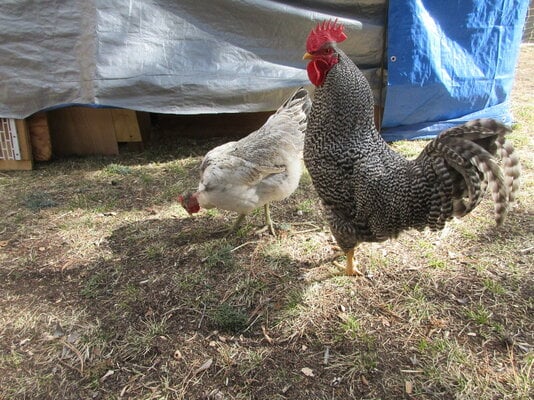Weeg
Enabler
Hey guys!
We are getting a batch of 12 meat birds in the spring, I don't like to cull any thing, haha, so have made the family agree that I can keep 2-3 of the broilers, limit feed and do an experiment as keeping them for pets.
I need all of the tips I can get, how much should I feed them? Should I feed a certain amount in two sections, like breakfast and dinner, twice a day? Or is it okay to feed a larger, but still limited amount once a day? Will they do okay living with an all bantam flock? I'm assuming that will just have to be something I find out on my own though. My concern with that would be limiting feed, I would have to separate the broilers for their limited feed, and then feed the bantams.
They will be in an appropriately sized coop and pen with the bantams, so will have enough room to run around. All the info I can get, anything important I need to know, since all I can think of is limiting feed. We are designing the coop now so anything I need to add, or make special for the broilers, I can add to the design now. Thanks for any info! I'm very excited for this experiment!
We are getting a batch of 12 meat birds in the spring, I don't like to cull any thing, haha, so have made the family agree that I can keep 2-3 of the broilers, limit feed and do an experiment as keeping them for pets.
I need all of the tips I can get, how much should I feed them? Should I feed a certain amount in two sections, like breakfast and dinner, twice a day? Or is it okay to feed a larger, but still limited amount once a day? Will they do okay living with an all bantam flock? I'm assuming that will just have to be something I find out on my own though. My concern with that would be limiting feed, I would have to separate the broilers for their limited feed, and then feed the bantams.
They will be in an appropriately sized coop and pen with the bantams, so will have enough room to run around. All the info I can get, anything important I need to know, since all I can think of is limiting feed. We are designing the coop now so anything I need to add, or make special for the broilers, I can add to the design now. Thanks for any info! I'm very excited for this experiment!




